Let’s learn about Burning Bush, a deciduous shrub. They have red fall foliage that is perfect for your landscape. Learn about Burning Bush, its profile, pruning, uses, and the care it needs. Imagine its red color adding a fiery twist to your garden, isn’t it amazing?

Burning Bush, a deciduous shrub, is popular because of its biblical association. According to the Bible, God catches the attention of Moses using Burning Bush. This aside, whoever passes by this cannot help but look at its beautiful red foliage.
This plant is native to Asia and eventually became popular in North America. At first, it was a threat to natural areas because it is easily dispersed. Birds eat their fruits and propagate their seeds – the tolerance of this plant to a wide variety of soil and drought shades out other native plants. But later on, it became a plant that graced many gardens in North America, and soon its medicinal properties were discovered and are healing many diseases and complications.
Burning Bush (Euonymus alatus) Profile
| Common names | Burning Bush |
| Scientific name/Botanical name | Euonymus alatus |
| Family | Celastraceae |
| Plant Type | Deciduous shrub |
| Origin | Eastern Asia, Korea, Japan, and Central and North China |
| Hardiness Zones | Zone 4 to Zone 8 |
| Growth Rate | One (1) to two feet per year |
| Mature Height | 15 to 20 ft. tall and eight (8) to 12 ft. wide |
| Mature Width | Eight (8) to 12 ft. wide |
| Bloom Time | Spring |
| Sun Exposure | Full sun to partial shade |
| Lifespan | 250 years |
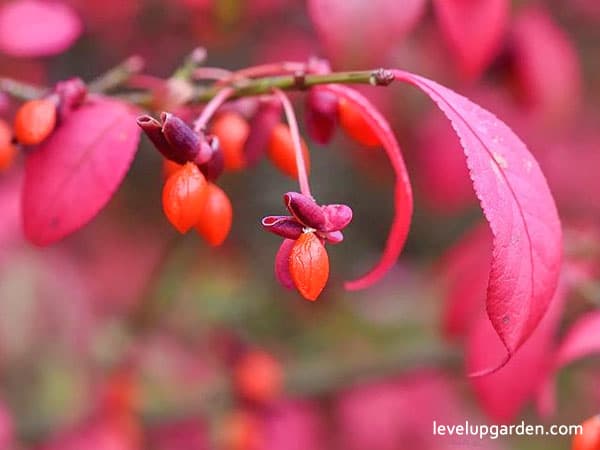
Symbolism
In the Bible narrative, it is said that the angel of the Lord is described as appearing as a bush. Many religions symbolize the plant Burning Bush, such as; Christianity, especially the Reformed tradition of Protestantism and Judaism.
The Reformed Church of France’s symbol is a Huguenot cross with Burning Bush. The Church of Scotland motto is Nec tamen consumebatur, the Latin for “Yet it was not consumed”, an implication to the biblical description of the plant. They also used this plant as a symbol from the 1690s.
In Judaism, the Jewish Theological Seminary of America uses a logo of the burning bush and a phrase, “and the bush was not consumed in English and Hebrew.
Appearance
- Leaf: Finely pointed flat leaves. Its color turns from green to red when autumn comes. They have fuzzy hair on the bottom of the leaf.
- Bloom period: May to June
- Twig/Bud: Vibrant green in color. It has a special feature called “wings” that follows the length of the stem.
- Fruit: An edible berry that changes color from green to red and eventually to black when ripe. It has a bitter after and dries out your mouth.
- Flower: They are yellow-green and radially symmetrical in the loose group.
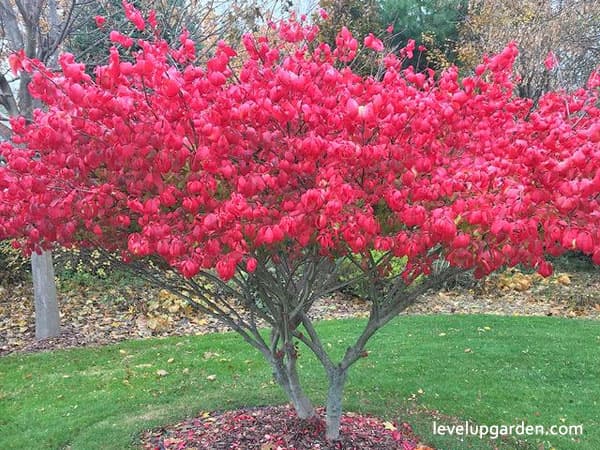
Growing and Care Conditions
Light
The Burning bush grows best when it has exposure to full sun; give it a direct light for six (6) hours. When the weather is not cooperating, it can adapt to partial shade; the advised duration for this exposure is four (4) to six (6) hours.
Soil
Burning bush adapts to a wide variety of soil; however, growing it on moist or well-drained soil is preferable. The acidity of soil doesn’t really affect the growth or health of the plant, but it grows best at a pH of six (6) to 7.5, which is the pH level of most garden soils. This soil is moderately acidic to slightly alkaline.
Water
After planting a burning bush, you have to water it regularly. Then, little by little, you can reduce its water by an inch of rainfall. Once it is settled, you don’t have to worry about its hydration as it is drought-tolerant.
If you prefer to use an automated irrigation system, set the timer during the early morning and not in the evening. Setting the timer in the evening can cause diseases such as fungi and foliar diseases.
Temperature and Humidity
When young, high humidity is good for the plant. When settled, it needs good air circulation for its leaves to stay dry.
Fertilizer
The best fertilizer you can feed your burning bush is a slow-release fertilizer designed for trees and shrubs. Feeding fertilizer in early spring results in excellent spring growth to keep the leaves’ deep green color, steady growth, and the health of the plant.
Pests and Diseases
The most common pest that destroys the Burning Bush is spider mites. They are difficult to see because of their size. But if the leaves turn red too early, check if there are spider mites by placing a paper under a branch and shaking the branch. These mites are visible on paper.
The worst-case scenario is when there are fine webs under the leaves. If this happens, the easiest way to get rid of them is by a stream of water.
Another problem is those powdery substances on its foliage, and this is called “powdery mildew”. These are very difficult to deal with. In case this happens, immediately cut and destroy all of the infected parts. Your bush might need some serious treatment.
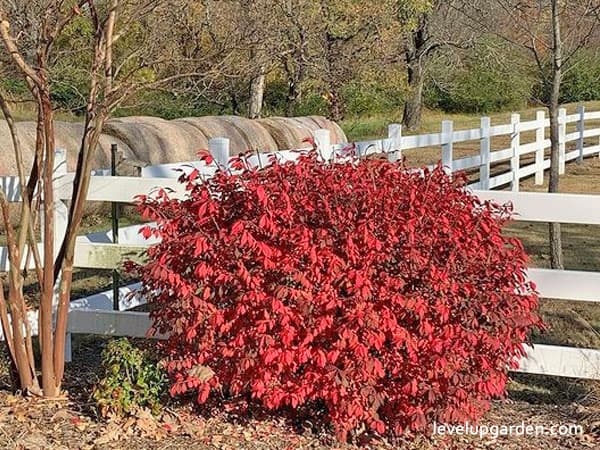
Pruning
The most important reason to prune a burning bush is to maintain its health by ensuring all of the damaged, diseased, or dead branches close to the main are pruned properly.
Pruning should be done in late winter or early spring; this way, it stays in shape and allows the growth of the new branches.
Varieties
Pipsqueak Winged Burning Bush
This variety of burning bush is very popular and one of the easiest to plant. It has a shapely mounded growth, one of the reasons it is a popular landscape. It has green leaves throughout the season and turns to red foliage in fall.
It can grow to five (5) feet tall and spread to six (6) feet wide. It can grow in dry and moist locations. It also has a high tolerance of urban pollution; thus, it can grow in the city. This is a low-maintenance shrub and has no significant negative characteristics.
Winged Spindle Tree
This variety grows up to six feet tall and nine feet wide. The flower blooms from July to August, but the flowers are small and not noticeable at a distance. They are found in Eastern Asia and the lowlands and mountains of Japan.
Suitable for most soil types, such as; sandy, loamy, heavy, and well-drained soils. In terms of pH level, it can grow in acidic, neutral, basic, and very alkaline soils. The sun exposure it can grow in is semi-shade to no shade.
Burning Bush
This type of Burning Bush can grow to an average of 15 to 20 feet. This type is included in the invasive list of Massachusetts, which means they propagate well independently. However, California did not include Burning Bush in their invasive list.
The foliage of this type turns to a bright red color that makes it look like it’s burning. This variety is native to Korea, China, Eastern Russia, and Japan, then eventually introduced to America. It grows in zones A3, 2A to 3B, 4 to 10, and 14 to 16.
Rudy Haag
Rudy Haag is probably the smallest variety of Burning bush smaller than the Dwarf Burning Bush. Unlike most of the Burning Bush varieties, Rudy Haag is almost seedless, which means it cannot produce fruits, so it does not have an invasive nature.
Despite this fact, Massachusetts and Connecticut still include this plant in their invasive list. This plant can grow to three to five feet. It can tolerate most types of soil and growing conditions. It can grow to the same zones as the variety Burning Bush.
Eastern Woo
Eastern Woo is native to North America and is not listed as invasive. Rather than that, it is actually considered an endangered species in Florida. It can grow in zones A1 to 17 and is tolerant to many soil conditions as long as it is well-drained.
This variety can turn from a shrub into a tree because it can grow up to 20 feet. The flowers of this type develop purple flowers; their leaves turn from green to a reddish color as the season changes from summer to fall.
Kochia
Bassia scoparia, also known as Kochia, is a member of the Chenopodiaceae family. It can reseed on its own; that is why many states include this plant in their invasive list, such as; California, Connecticut, and Washington. It grows in zones A1 to 3B and 4 to 24, indeed a hardy plant.
During the autumn, the foliage of this plant has a beautiful burgundy shade. This can also grow in different climates and soil conditions.
Dwarf Burning Bush
Euonymus alatus Compactus also reseeds itself, and if it is not controlled, it can become invasive. They are included in the invasive list of Massachusetts and Connecticut; however, California didn’t list this plant as invasive.
It can grow to a height of 6 to 8 feet and will develop red leaves in the fall. They also have red cherries that the birds eat then dispersed the seeds. It can grow in zones A3, 2A to 3B, 4 to 10, and 14 to 16.
Uses of Burning Bush
Burning Bush has many medicinal uses. Its leaves and roots are used to make herbal medicine. Not only that, there are benefits to planting a burning bush.
This plant is used for digestive tract disorders such as; worms in the intestines, stomach complications, and cramps. It can also help to start menstruation for women and as birth control. They also use Burning Bush to help in forcing out the placenta after childbirth.
Following are the other medicinal uses of Burning Bush:
- Epilepsy
- Spasms
- Fluid retention
- Baldness
- Liver disease (hepatitis)
- Use as a stimulant
- Wounds
- Eczema
- Bacterial infection
- Swelling
- Infection by lice-like insects
- Joint pain caused by arthritis or rheumatism
- Fever
- Excessive uterine bleeding
- Sedatives
FAQs
Where is the best place to plant a Burning Bush?
The best place to plant a Burning Bush is a place with full sun to partial shade, but prefer a sunny location if possible. Keep weeds, debris, and lawns clear. Dig a hole 2 to 3 times the width of the rootball and the same depth.
Do Burning Bushes spread?
Yes, they do. Burning Bush spreads primarily by birds dispersing its abundant and well visible fruit. The fruits remain through the winter, making it easier for birds and mammals to see them
How tall does a dwarf burning bush get?
Burning bush is slow-growing, with Dwarf varieties growing only 10 feet tall and wide, while larger varieties can reach 15 feet.
This plant is definitely interesting. Burning Bush is truly an incredible plant from a nuisance to beauty with many health benefits. What do you think about this? I hope this post helped you learn more about Burning Bush. Comment your thoughts below. Thank you.
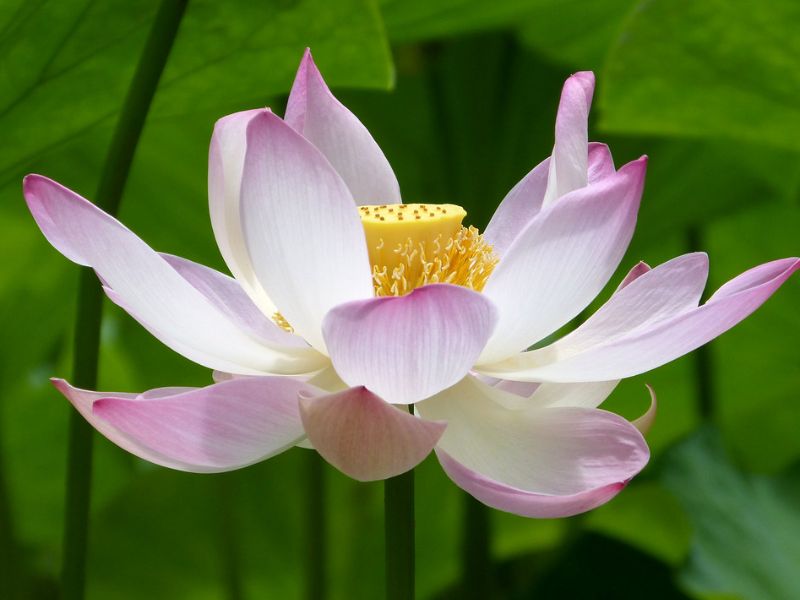
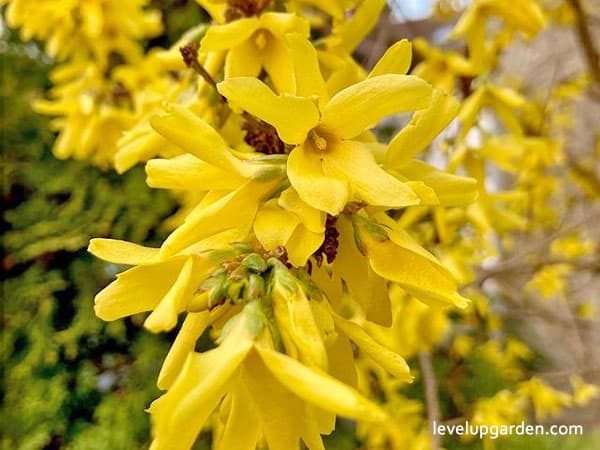






Leave a Reply